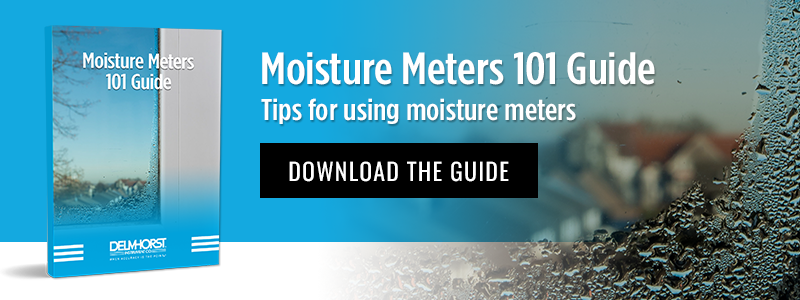For any contractor working with concrete, the moisture conditions deep in the concrete slab are always a major concern. If there’s too much moisture in a concrete slab, a number of problems can occur, such as:
- Bubbles in the Surface. In newly-poured concrete, excess water may rise to the surface. In some cases, this may be severe enough to create pockmarked or cratered surfaces.
- Cracked Surfaces. This is a cosmetic flaw often associated with drying concrete too fast. Rapidly evaporating moisture can leave splits or cracks in the surface of the concrete as the mix doesn’t receive the proper amount of time to settle.
- Moisture Being Absorbed by Other Building Materials. If other building materials are placed above a moisture-compromised concrete foundation or floor slab, then the moisture that is released can be absorbed by those building materials, leading to a series of other problems.
Some companies offer special “concrete moisture meters” that promise to give contractors a quantifiable measurement of the moisture content of concrete.
There’s just one problem:
No Moisture Meter, Pin or Pinless, Can Provide Accurate, Quantifiable Measurements of Concrete Moisture!
There are a couple of reasons for this:
- Concrete Thickness. Concrete slabs can be several feet thick. A pin-type meter can only get the barest surface reading of moisture in concrete (basically only as far as the pins can penetrate concrete), while most pinless meters have a fixed scanning depth of about ¾”. Considering that the moisture conditions near the surface of the slab can be very different from those deeper in the slab, this makes a surface-level reading nearly worthless as a means of assessing concrete’s moisture content.
- Concrete Mix Variety. There are countless different mixtures of concrete. Even two batches of the same kind of concrete processed in the same facility might have significant differences in their chemical composition. This makes calibrating a moisture meter to be objectively, quantifiably accurate for any kind of concrete—let alone all varieties of concrete—effectively impossible.
The best way to monitor concrete moisture is with the ASTM-F-2170 standard, which solves for the above problems by:
- Preparing Holes That Go Deep in Concrete. The ASTM standard calls for contractors to drill holes into a concrete slab and install special sleeves to seal them—preserving the conditions of the deeper concrete slab for more accurate testing results.
- Measuring Relative Humidity, Not Moisture Content. Rather than focusing on a precise %MC value for the concrete, the ASTM standard makes contractors monitor the relative humidity, or RH value, of the slab. This makes for a more accurate means of predicting how concrete will behave.
To get the most accurate assessments of moisture conditions deep in a concrete slab, and to follow the ASTM-F-2170 standard that best protects against callbacks and loss of reputation, contractors need to use thermo-hygrometers with in-situ probes to check RH deep in concrete!

Comments